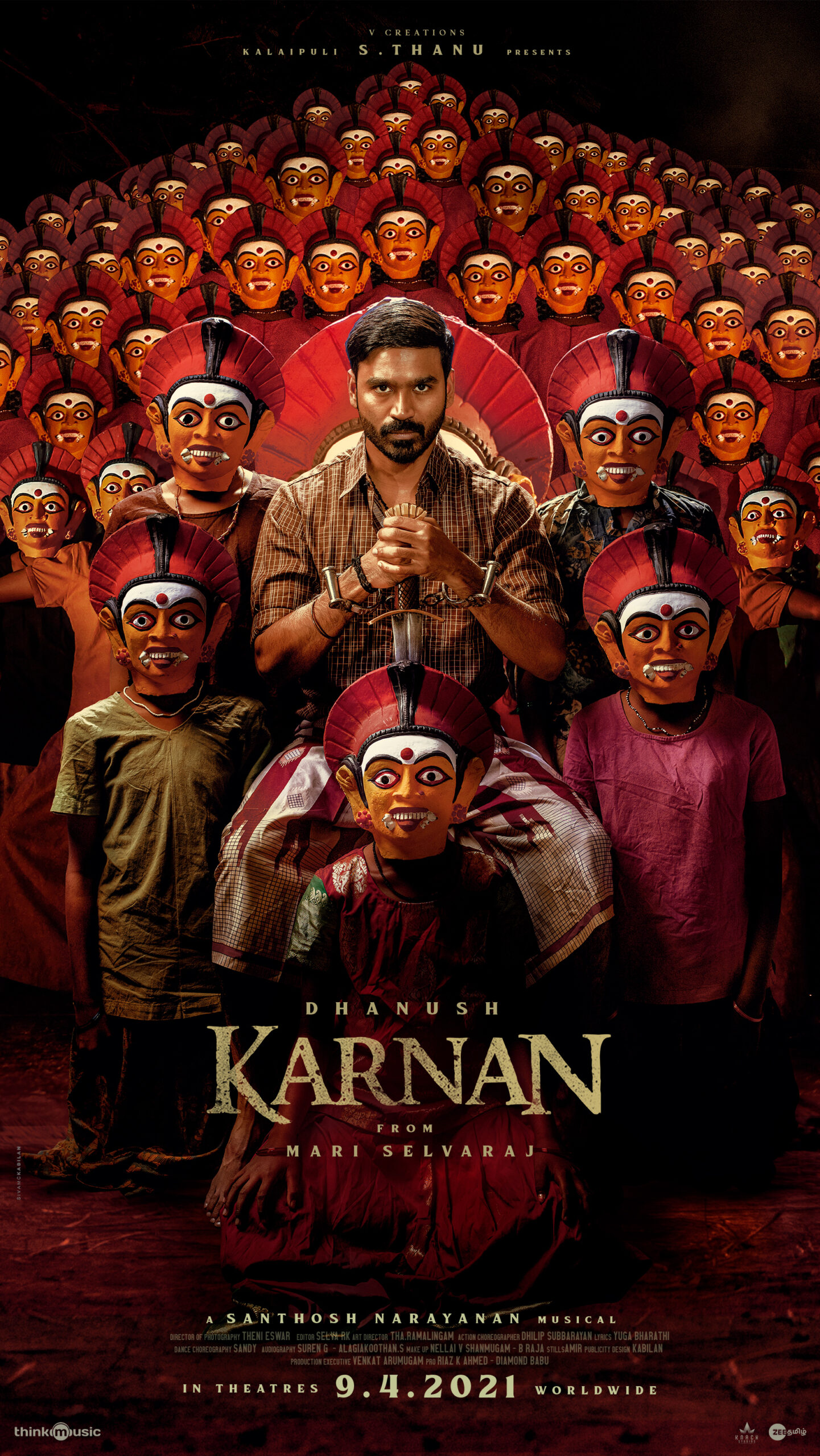
The iconic ‘Karna’ was a central character in the epic ‘Mahabharata’. ‘Karna’ the son of a poor Chariot Driver, who beat all odds to emerge as a name is remembered all time. The Film has ‘Karnan’ , the representative of the lower caste. ‘Karnan’ is the face of revolt in an unknown, small and almost socially ostracised village of Tamil Nadu, in the film. The worshipped God in this commune of untouchables, is headless, ‘Karnan’ is the face of this headless deity. This obscure village’s long-standing simple demand, that is not in sync with the fast-moving 21st century, is having a bus-stand for the village, which will enable the village girls to go to distant schools and colleges, which will help pregnant women to go to hospitals etc. ‘ Karnan’ , on behalf of the Dalit community of the village , becomes the face of this demand, crusades for the bus-stand, puts his own life in danger fighting for justice.
Director Mari Selvaraj uses metaphors from “Mahabharata” in his film – the names of different characters in his film have thus been kept as “Duryodhana”, “Draupadi” etc. The small, Dalit village girl died due to an epilepsy attack on the roadside 10 years ago , because she couldn’t be taken to a hospital since there was no bus-stand , comes back time and again in the film, with her face being covered by a mask of an unknown Goddess. This face perhaps floats around to arouse the collective conscience of the villagers; this face waits for revolt and justice. So when ‘Karnan’ boldly stands up against the unjustified atrocities of the police, the unsatiated soul of the dead girl, in the guise of the Goddess-face, claps. She ultimately finds justice, in this way.
The music that is used by Director Selvaraj in the beginning, is not merely a song, it is an earnest prayer to the Saviour, urging Him to save the souls of the villagers. The battle that is shown throughout the film is a battle for justice; it’s a revolt by the oppressed against the oppressor. All for a mere bus-stand! In a 21st Century India where expeditions to the Moon and Mars are explored, a film depicting people shedding blood and tears for a bus-stand, looks almost like a stand-up comedy. To showcase this unbelievable class-divide and societal inequality, Selvaraj has used various metaphoric tools – like a donkey, with his front two legs tied up, his movement stalled, just like the put-down lives of the Dalit commune of the village. Once the donkey is freed, it runs like crazy towards a hilltop and at that moment ‘Karnan’, the metaphoric face of the headless deity, looms large over the oppressors, their evil designs, and combats them with an open sword in his hand.
The Director has been immensely successful in depicting village scenes, daily lives of villagers and has dealt with minute details of such life flows, with élan. Actor Dhanush has done exemplary work in this sensitive movie , the actor in him could get into the real skin of the character ; in fact the character ‘Karnan’ has overshadowed the actor ‘Dhanush’ , such is the acting prowess of this seasoned actor. As a matter of fact, all the actors – Rajisha, Lakshmi Priya, Lal, Yogi Babu among others, are so believable and natural, it seems all of them are real villagers who stay in that retrograde, oppressed village. Santosh’s music and particularly Theni Eswar’s cinematography are assets of this film.‘Karnan’ is definitely worth a watch.